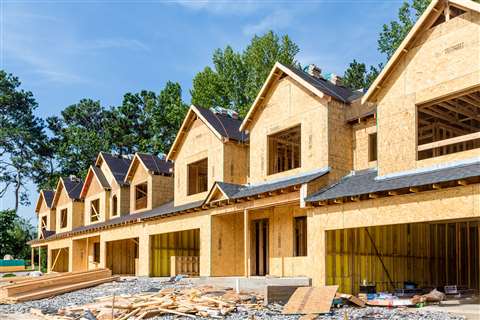“Frenzy” in US residential construction
22 September 2021
 Construction of new homes, and improving old homes, has greatly increased since the pandemic
Construction of new homes, and improving old homes, has greatly increased since the pandemic
The Covid-19 pandemic led to a “frenzy” in residential construction and, although the market has cooled, it is still very strong, according to Charles Dougherty, vice president and economist with Wells Fargo Securities.
Dougherty, speaking at the ALH Conference added that consumer confidence and consumer sentiment are showing steady growth in the US.
According to Dougherty, residential construction has seen tremendous growth since the pandemic for a variety of reasons, including the need for additional household space as more people work from home.
“We’ve seen this frenzy in residential construction, but it’s cooled off a little bit due to supply chain constraints,” he said, noting the price of lumber, for example, went up over 100% over the course of a year. “The good news is that has come down, and we think the prices of other commodities are on their way down as well.”
Dougherty said residential construction should continue to slow down due to astronomical home prices that have made things unaffordable for many prospective homebuyers.
“Apartment construction is actually ramping up,” he noted. “As vaccinations have spread worldwide, we’ve seen apartment demand really pick up and that has encouraged developers to move forward with multifamily projects.”
Commercial real estate is still improving but is not on firm ground. The retail environment has improved as consumer spending the US has been a bright spot over the past year, and household balance sheets have been very strong just from fiscal stimuli.
“Office construction is a big part of nonresidential construction,” Dougherty said, noting that it seems clear that companies are going to need less office space than before the pandemic.
 Charles Dougherty
Charles Dougherty
“Everything is negative in the outlook for nonresidential, with the exception of warehouse construction,” he said. “Consumer spending has been directed more toward online transactions and ecommerce, so of course we’ll need more warehouses and distribution facilities to make that happen.
“Industrial construction, especially warehouse and service centers and distribution facilities, are very strong and we expect that to continue to be the case as more retailers invest heavily in their distribution chains and their value chains shift more of their business away from brick and mortar towards ecommerce. That’s a long-term growth area.”
Dougherty said he expects a return to a pre-pandemic economy in 2022 and 2023.
“We’ve seen the worst of it, and I think construction’s going to improve from here on out,” he stated. “Supply chain constraints are having a huge impact on commodity prices and this is the number one issue.”
STAY CONNECTED



Receive the information you need when you need it through our world-leading magazines, newsletters and daily briefings.
CONNECT WITH THE TEAM









